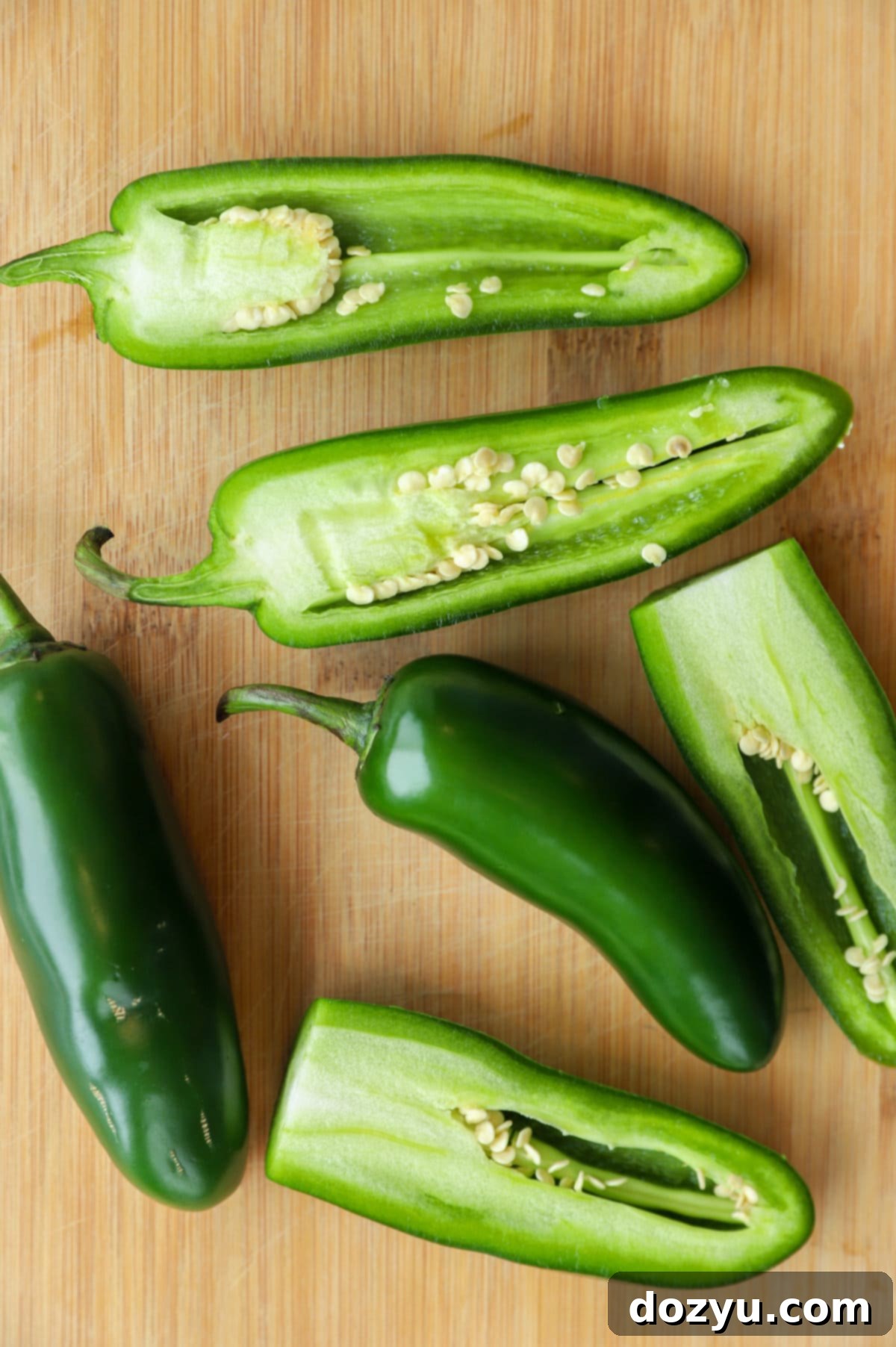How to Seed a Jalapeño: The Ultimate Guide to Managing Heat and Enhancing Flavor
Unlock the full potential of jalapeño peppers by mastering the art of seeding them! This comprehensive guide will show you how to easily prepare jalapeños for dicing, chopping, or transforming them into delicious jalapeño poppers. Beyond the how-to, we’ll delve into understanding pepper heat, essential safety tips, and share our favorite recipes to make the most of your freshly seeded jalapeños. Let’s dive into this essential kitchen skill!
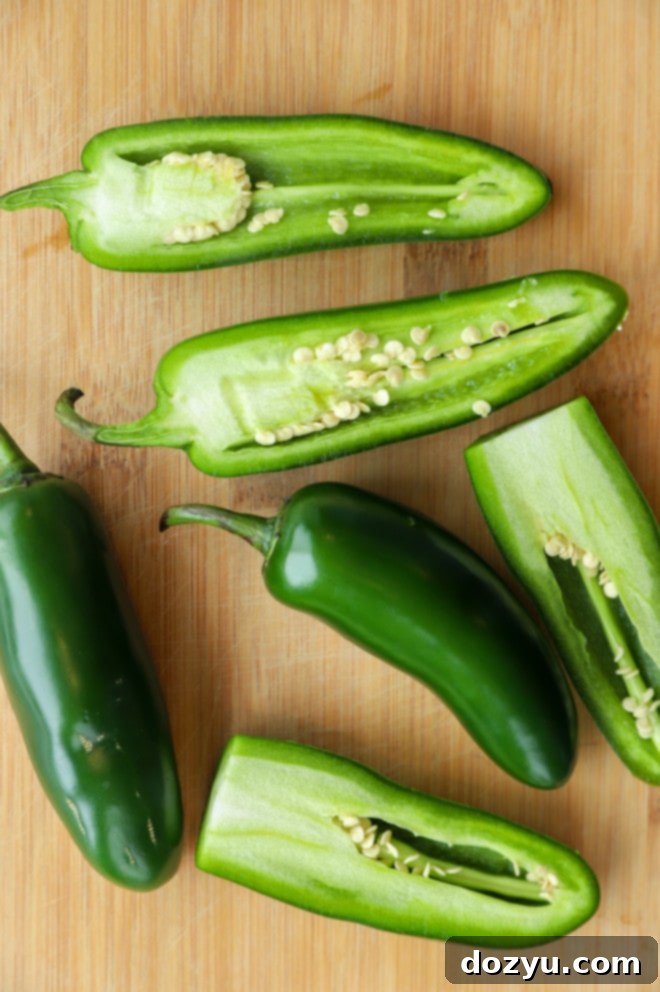
There’s nothing quite like the vibrant flavor and zesty kick of a fresh jalapeño pepper to elevate your favorite dishes. From Mexican cuisine to everyday meals, these versatile peppers add a unique punch that many of us crave. The world of chile peppers is incredibly diverse, offering an astonishing array of heat levels and distinct flavor profiles. Today, our focus is specifically on the beloved jalapeño, a medium-heat pepper that’s a staple in kitchens worldwide.
Before we dive into the how-to, here’s a fascinating and incredibly useful tip about jalapeños:
Did you know that the larger the jalapeño, the spicier it tends to be? This has proven to be an invaluable piece of advice, enabling me to quickly select the perfect pepper for any recipe, depending on the desired level of heat. Smaller jalapeños often offer a milder experience, while their larger counterparts pack a more significant fiery punch. Keep an eye out for “stress marks” or “corking” – those white, brownish lines on the pepper’s skin. These are often indicators of a spicier pepper, as they develop when the pepper has undergone more stress during growth, leading to higher capsaicin production.
The characteristic heat in all chile peppers comes from a chemical compound called capsaicin. This is the very substance that can cause a burning sensation when it comes into contact with sensitive areas like your eyes, nose, or any cuts on your skin. While it gives jalapeños their signature kick, it also means proper handling is crucial, which we’ll cover in detail.
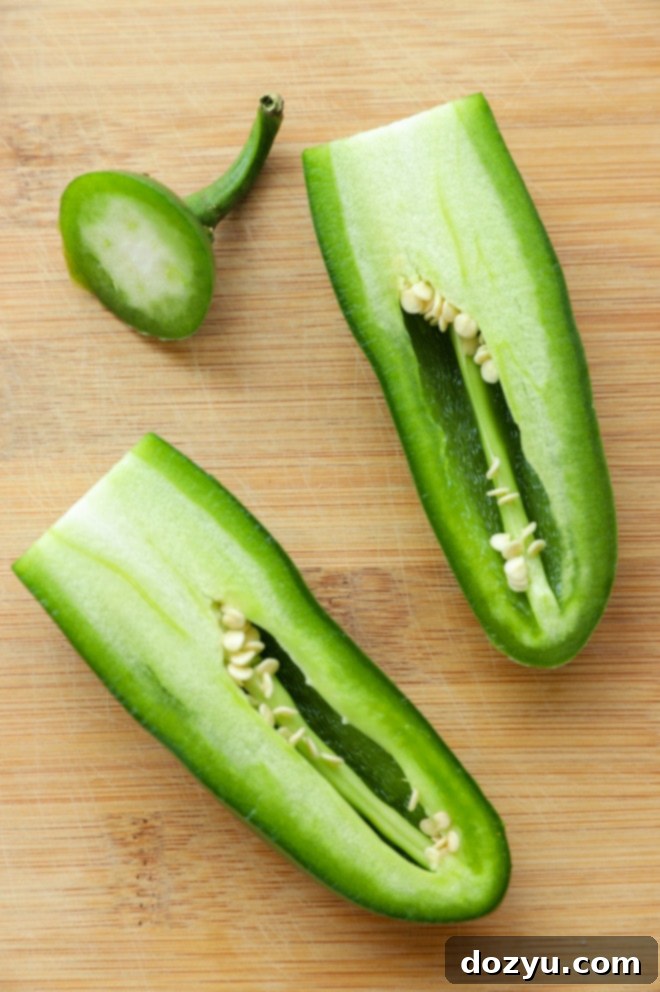
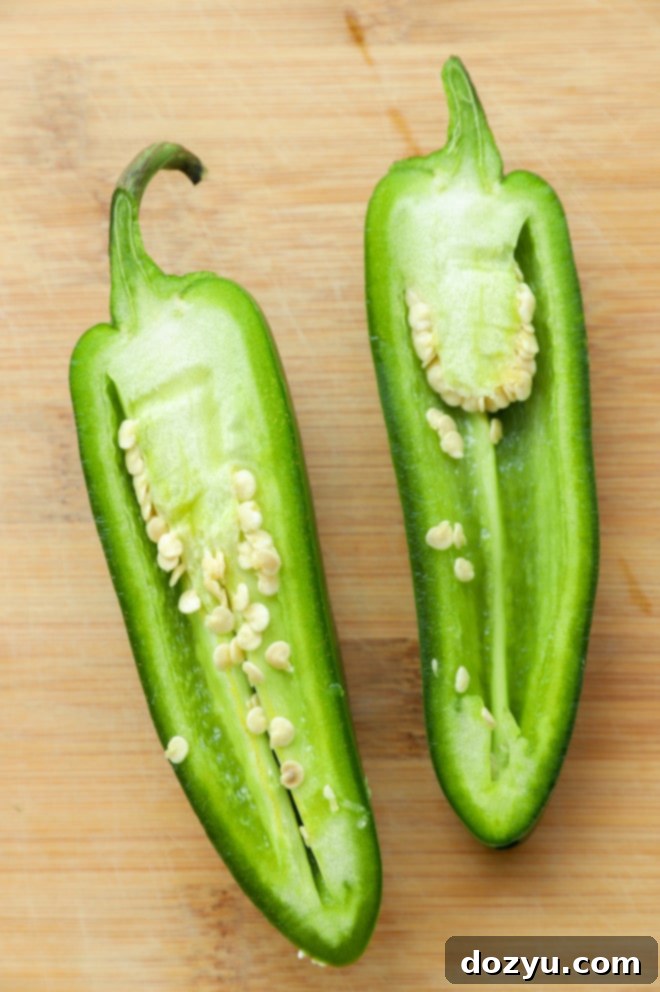
Table of Contents
Toggle
How to Avoid the Jalapeño Burn
While the heat of a jalapeño is desired in food, the burning sensation it can cause on your skin is definitely not! Capsaicin, the compound responsible for the heat, can linger on your skin, leading to discomfort, especially if you accidentally touch your eyes, nose, or any other sensitive areas. Even if you’re generally brave when handling peppers, it’s always wise to take precautions.
The simplest and most effective way to protect yourself is to **wear plastic or latex gloves**. This creates a physical barrier, preventing your skin from coming into direct contact with the capsaicin. It’s a small step that makes a huge difference, particularly if you’re processing a large batch of peppers or have sensitive skin.
However, we’ve all been there: you forget the gloves, and suddenly your hands are stinging. If you find yourself in this predicament, don’t despair! A fantastic and often surprising remedy is to use **olive oil or any other vegetable oil**. Capsaicin is fat-soluble, meaning it dissolves in oil but not readily in water. Rub a generous amount of olive oil (or vegetable oil) all over your hands, ensuring it covers all affected areas. Let it sit for a minute or two, then wash your hands thoroughly with soap and water. While it may not completely erase the burning sensation instantly, it will significantly help to dissolve and remove the capsaicin, reducing the discomfort. The burning should subside considerably within a couple of hours.
Note: You can use any vegetable oil you have on hand, so there’s no need to use your expensive extra virgin olive oil if you’d rather save it for cooking!
What You’ll Need to Seed Jalapeños
Preparing jalapeños is a straightforward process that requires only a few basic kitchen tools. Gathering your equipment beforehand makes the task quick and efficient:
- Jalapeño peppers: The stars of our show! Remember our tip: larger peppers tend to be spicier. Choose based on your heat preference.
- A Sharp Chef’s Knife: A good, sharp knife is essential for clean cuts and safe handling. It allows you to precisely remove the stem and halve the pepper without struggling.
- A Sturdy Cutting Board: A stable surface is crucial for safety and ease of cutting. Opt for a non-slip cutting board to prevent accidents.
- A Small Spoon: This is your secret weapon for quickly and effectively removing the seeds and the membrane. A teaspoon or even a grapefruit spoon works perfectly.
- Gloves (Optional, but highly recommended): As discussed, latex or plastic gloves are your best defense against capsaicin burn.
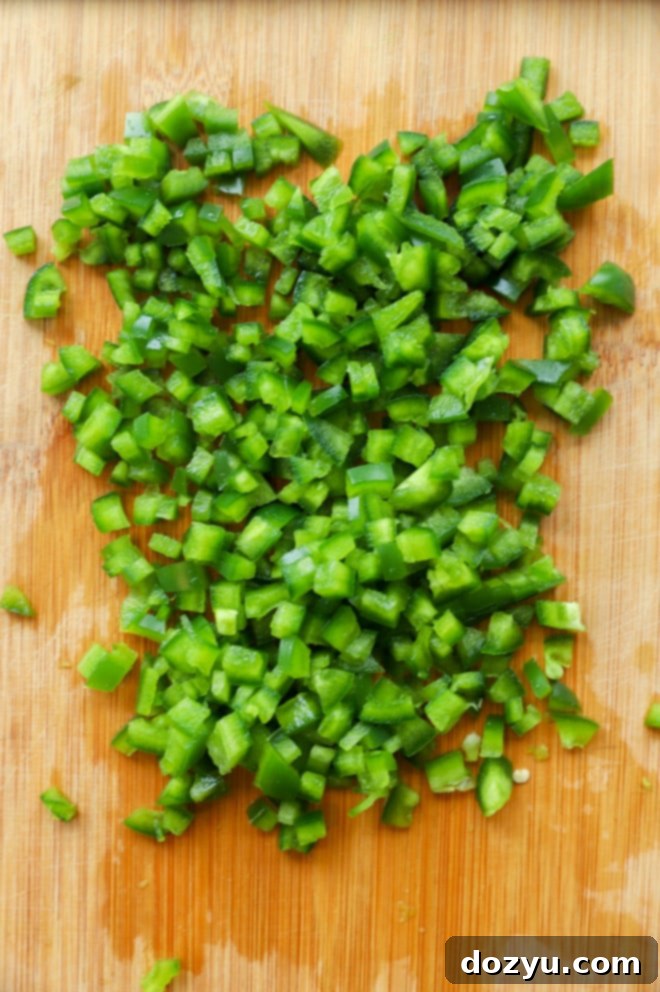
Here’s How to Seed a Jalapeño Step-by-Step
Seeding a jalapeño is a simple technique that can significantly impact the heat level and texture of your dishes. Follow these easy steps for perfectly prepared peppers every time.
Cut and Prepare Your Jalapeño
First, always start by thoroughly washing your jalapeños under cool running water. Pat them dry. Then, place the jalapeño on your cutting board. The initial cut depends on how you plan to use the pepper:
- For dicing, chopping, or mincing: Lay the jalapeño flat and carefully slice it lengthwise down the middle. Once halved, you can easily remove the stem and get straight to seeding. This method is ideal when you need finely chopped pepper pieces.
- For jalapeño poppers or stuffing: In this case, you’ll want to preserve the pepper’s cup-like shape. Cut the jalapeño lengthwise, but instead of cutting through the stem, carefully slice around it or make an incision to remove the core while keeping the stem attached to one half. Alternatively, you can slice the pepper in half from top to bottom, keeping the stem intact on both halves for a more rustic look or as a convenient handle for eating. Sometimes, for poppers, people will just slice off the top (stem end) and then use a small spoon or corer to remove the seeds and membrane from the top opening. This creates a neat cavity for stuffing.
Regardless of your cutting style, your goal is to expose the inner cavity of the pepper where the seeds and white membrane (pith) reside.
Remove Seeds and Membrane for Desired Heat
Now, grab your small spoon. This is where the magic happens:
Use the spoon to gently scrape out the seeds and, more importantly, the white membrane (also known as the placenta or pith) from the inside of each jalapeño half. Start at the bottom of the pepper half and scoop upwards towards the stem end. This upward motion is generally more effective because seeds tend to cluster at the bottom. By scooping up, you can more easily dislodge and remove all the seeds and membrane pieces in one fluid motion, pushing them towards the wider opening.
Should I be able to get it all out in one motion? While practice makes perfect, it often takes a few scoops to completely clear the cavity, especially when you’re first learning. Don’t stress if it takes a little extra time with your first few peppers. You’ll quickly get used to the motion and improve your efficiency with practice.
The key to controlling heat: For a significantly milder flavor, make sure to remove ALL of the seeds and as much of the white membrane as possible. The membrane is where the vast majority of capsaicin is concentrated, not the seeds themselves (though seeds often have capsaicin clinging to them). If you desire some heat, you don’t need to be quite as thorough; leaving a few seeds or a small amount of membrane will retain some of the pepper’s characteristic spiciness. This allows you to customize the heat level precisely to your liking and the needs of your recipe.
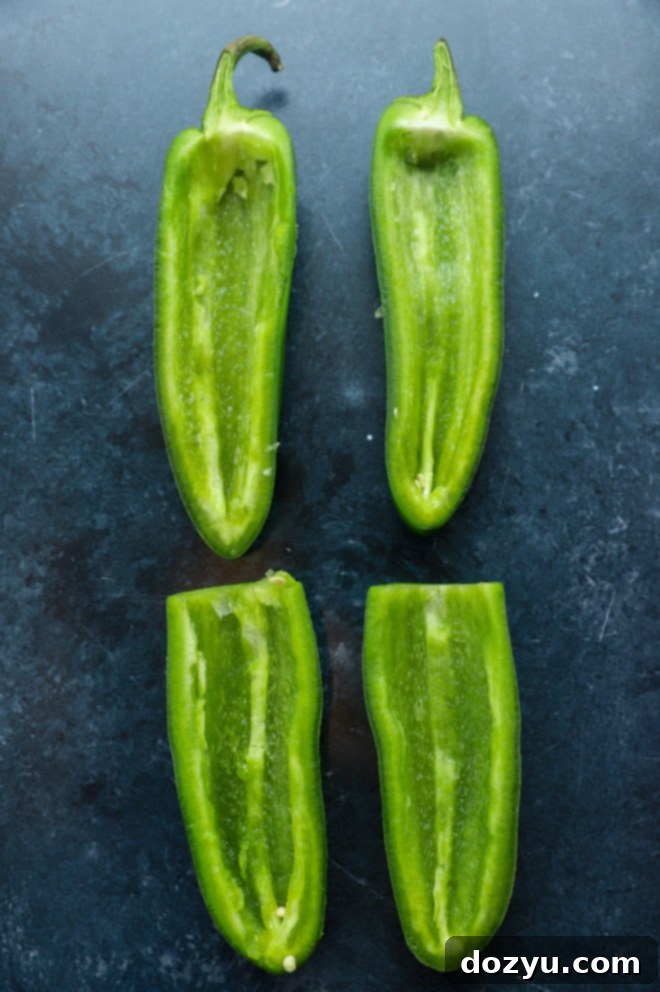
Essential Tips for Success
Beyond the basic steps, these additional tips will help you achieve the best results and ensure a safe and enjoyable cooking experience:
- For uniform dicing or mincing: After seeding, lay your jalapeño halves flat on the cutting board, skin-side down. Slice them lengthwise into long, thin strips (julienne). Then, rotate the strips and cut crosswise into small, even bits. This technique ensures consistent piece sizes for even distribution in your dishes.
- Wash up well! This cannot be stressed enough. If you opted not to wear gloves, immediately and thoroughly wash your hands with soap and water after handling peppers. If you feel any burning, remember the olive oil trick! Also, be meticulous about washing your cutting board, knife, and any other utensils that came into contact with the jalapeños. Capsaicin can transfer to surfaces and potentially cause irritation later. Always avoid touching your eyes, face, or any open cuts until you are certain all capsaicin has been removed from your fingers and surfaces.
- Consider the ripeness: Green jalapeños are what most people are familiar with. If left on the plant, they will eventually turn red, becoming sweeter and often spicier. Red jalapeños are great for salsas or when you want a deeper, fruitier flavor with more heat.
- Taste test (carefully): If you’re unsure about the heat level of a particular jalapeño, carefully taste a tiny piece of the seeded flesh before adding it to your dish. This helps you adjust the quantity as needed.
Can You Eat Raw Jalapeños?
Absolutely, you can! Raw jalapeños are a popular ingredient in countless dishes. You’ll find them lending their fresh, crisp texture and vibrant flavor to everything from zesty salads and vibrant salsas to creamy dips and as a garnish for tacos and nachos. The most important thing to remember is that **raw jalapeños tend to be significantly spicier than cooked ones**. Cooking a jalapeño mellows its heat and softens its texture, often bringing out a slightly sweeter, more complex flavor. So, if you’re using them raw, and especially if you’re sensitive to heat, be sure to seed them thoroughly!
How to Store Jalapeño Peppers
Proper storage is key to keeping your jalapeños fresh and flavorful. Here’s how to maximize their shelf life:
- Whole, Uncut Peppers: For optimal freshness, store whole jalapeños in the refrigerator’s crisper drawer. Placed in a plastic bag or loosely wrapped, they can last for 1 to 2 weeks. If you prefer, whole peppers can also be kept at room temperature for 3 to 5 days, but they will ripen and potentially soften faster.
- Seeded and Diced Peppers: Once you’ve cut and seeded your jalapeños, their shelf life decreases. Store them in an airtight container in the refrigerator for 2 to 4 days. This prevents them from drying out and helps contain their strong aroma.
- Freezing for Longer Storage: If you have an abundance of jalapeños, freezing is an excellent option. Simply wash, cut, and seed them, then chop or dice them as desired. Spread the pieces in a single layer on a baking sheet and freeze until solid. Once frozen, transfer them to a freezer-safe bag or container. They can be stored in the freezer for up to 6-8 months, perfect for adding to cooked dishes later.
Explore Our Everyday Seasonal Cookbook
Looking for even more ways to enjoy fresh, seasonal ingredients, including your perfectly seeded jalapeños? Our “Everyday Seasonal Cookbook” is a treasure trove of inspiration! Packed with handy seasonal produce guides, delightful recipes, and valuable cooking tips, this cookbook ensures you’ll have delicious, seasonal food for every occasion, all year round.
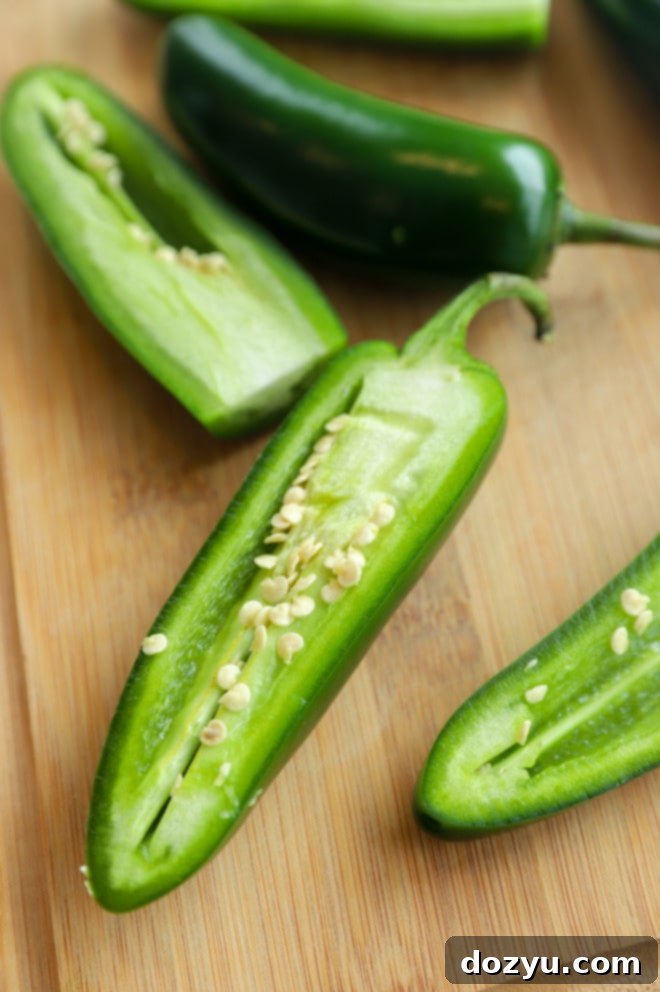
How Do I Know if My Jalapeños Have Gone Bad?
Identifying when your jalapeños are past their prime is fairly easy. Here are some signs to look for:
- Wrinkling Skin: The first common sign that jalapeños are losing their freshness is when the skin starts to wrinkle and lose its firm, taut appearance. While they might still be safe to eat at this stage, their texture will be softer, and their flavor might be slightly diminished. It’s best to use them up quickly if you notice wrinkling.
- Soft Spots or Sliminess: If you find soft, mushy spots, especially around the stem, or if the pepper feels slimy to the touch, it’s definitely past its prime.
- Discoloration: While some jalapeños naturally turn red as they ripen, any black spots, mold (fuzzy white or green patches), or unusual dark discoloration indicates spoilage.
- Odor: A fresh jalapeño has a clean, slightly pungent aroma. If it develops an off, foul, or sour smell, it’s time to discard it.
When in doubt, it’s always best to err on the side of caution and toss any peppers that show clear signs of spoilage.
Creative Ways to Use Seeded Jalapeños
Once you’ve mastered seeding, the culinary possibilities for jalapeños are truly endless! Removing the heat-bearing membrane and seeds allows you to enjoy their fresh, grassy flavor and satisfying crunch without overwhelming spiciness. Here are just a few ideas:
- Jalapeño Poppers: One of the most classic and beloved uses! Seeded jalapeño halves are the perfect vessel for stuffing with cream cheese, cheddar, bacon, or a combination, then baking or frying until golden and bubbly.
- Salsas and Dips: Finely diced seeded jalapeño adds fantastic flavor and texture to fresh tomato salsas, creamy guacamole, and a variety of cheese dips.
- Salads: Thinly sliced seeded jalapeño brings a refreshing bite and subtle zing to green salads, fruit salads (like mango or pineapple salsa), or even pasta salads.
- Marinades and Dressings: Minced seeded jalapeño can infuse marinades for meats, poultry, or fish, and add a bright note to vinaigrettes.
- Sandwiches and Wraps: Add thin rings of seeded jalapeño to your sandwiches, burgers, or wraps for an extra layer of flavor and crunch.
- Eggs: Incorporate diced seeded jalapeño into scrambled eggs, omelets, or breakfast burritos for a delicious morning kick.
- Infused Oils/Vinegars: For a mild, flavored oil or vinegar, add seeded jalapeño slices to your bottle and let it infuse.
Don’t be afraid to experiment! The fresh, herbaceous notes of a seeded jalapeño can complement a surprisingly wide range of ingredients and cuisines.
Our Favorite Jalapeño Recipes
Ready to put your newly seeded jalapeños to good use? Here are some tried-and-true recipes that celebrate the versatile flavor of this amazing pepper:
- Bacon Jalapeño Artichoke Dip: Craving something warm, cheesy, and with just the right amount of kick? Our bacon jalapeño artichoke dip is guaranteed to spice up any appetizer spread and be a crowd-pleaser.
- Salsa Jalapeño Crunch Burger: Take your burger game to the next level by creating our uniquely crunchy and spicy salsa jalapeño crunch burger! It’s an explosion of flavor and texture.
- Epic Jalapeño Poppers: If you’re searching for truly incredible jalapeño popper recipes, you absolutely must try our air fryer buffalo jalapeño poppers for a crispy, spicy bite, or our gourmet goat cheese bacon wrapped jalapeños for an elegant appetizer.
- Jalapeño Avocado Cream Cheese Wontons: One of the most popular recipes of all time on Cake ‘n Knife is this irresistible recipe for jalapeño avocado cream cheese wontons. They’re crunchy, creamy, and deliver just a delightful touch of heat!
- Spicy Jalapeño Popper Dip: This gooey, spicy jalapeño popper dip is perfect for feeding a crowd at your next gathering. Plus, it’s incredibly easy to make ahead of time and simply bake right before serving.
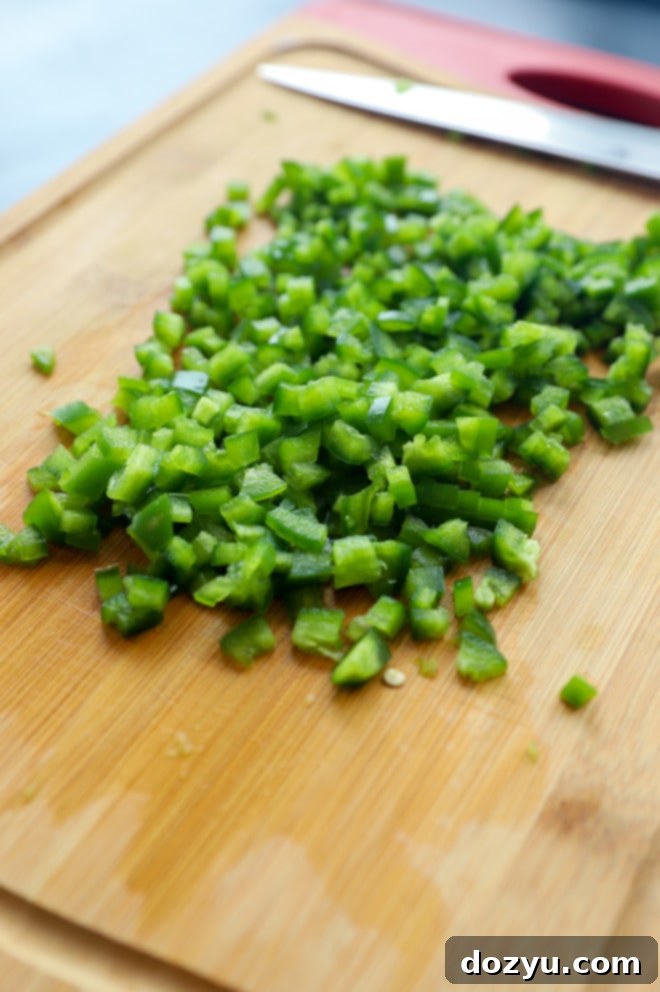
We hope this comprehensive guide empowers you to confidently seed jalapeños and explore new culinary horizons! If you use these instructions to prepare your jalapeños, please consider giving this how-to a rating or leaving a comment below. I genuinely love hearing how you’ve used your freshly seeded peppers and always make time to respond to every single comment. Feel free to drop any questions you might have as well!
And for those who love to share their kitchen creations, be sure to tag me on Instagram if you make a recipe using these techniques! Seeing these recipes come to life in your homes is truly my favorite thing, and I adore looking through all your wonderful photos. Your engagement means the world to me!
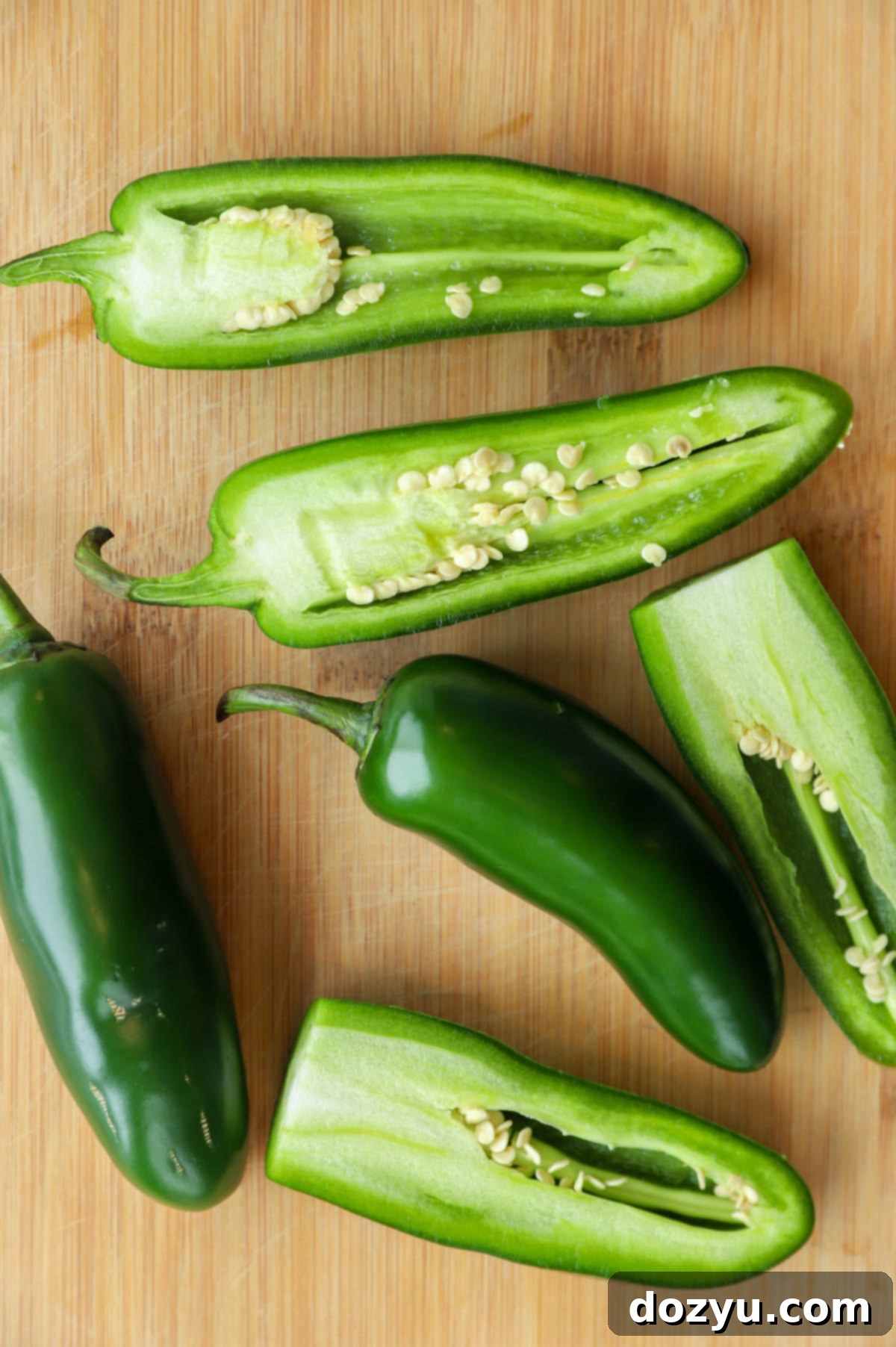
How to Seed a Jalapeño (Recipe Card)
10 minutes
10 minutes
Equipment
-
Wusthof Knife Set
-
Shun Chef’s Knife
-
Utility Cutting Board
-
Small Spoon
Ingredients
- Fresh Jalapeño peppers
- Gloves (optional, but recommended for sensitive skin)
Instructions
-
Prepare: Wash your jalapeño peppers thoroughly. Slice them in half lengthwise. If making jalapeño poppers, you may choose to cut around the stem or simply slice the top off to preserve the cup shape. For dicing, remove the stem entirely.
-
Remove Seeds & Membrane: Use a small spoon to gently scoop out all the seeds and the white inner membrane (pith) from the bottom of each pepper half, moving upwards towards the stem end. Be thorough if you want to significantly reduce the heat; for a little spice, you can leave a small amount of membrane.
-
Final Prep: Once seeded, dice, mince, or leave the pepper halves whole, as desired for your recipe. Remember to wash your hands, cutting board, and knife thoroughly with soap and water after handling, especially if not wearing gloves.
Video Tutorial
Kitchen Tips
